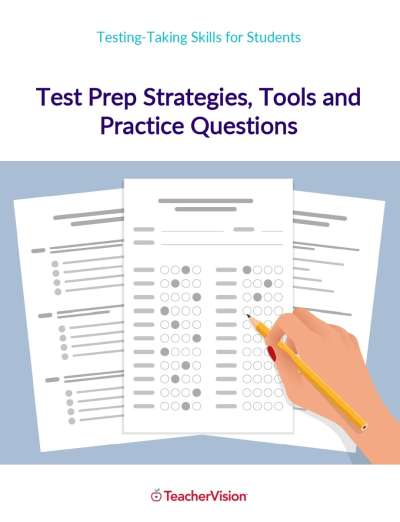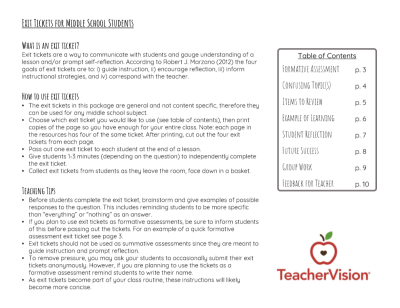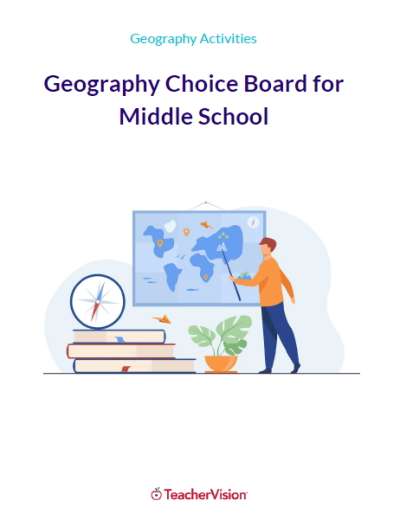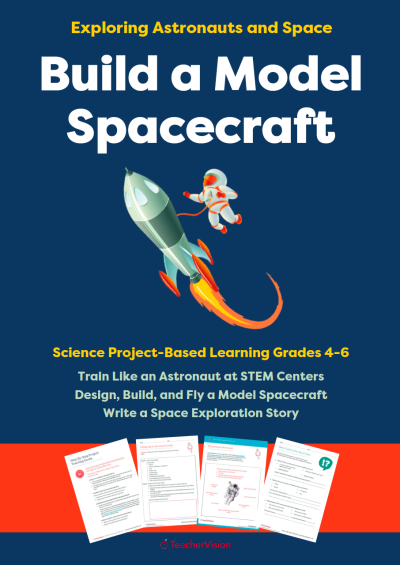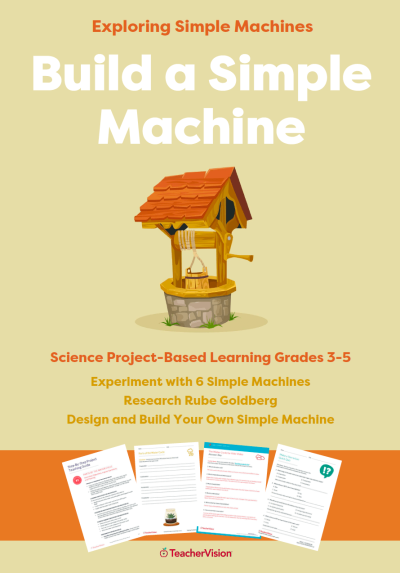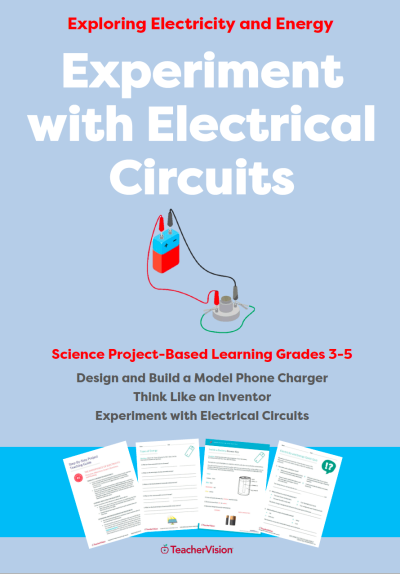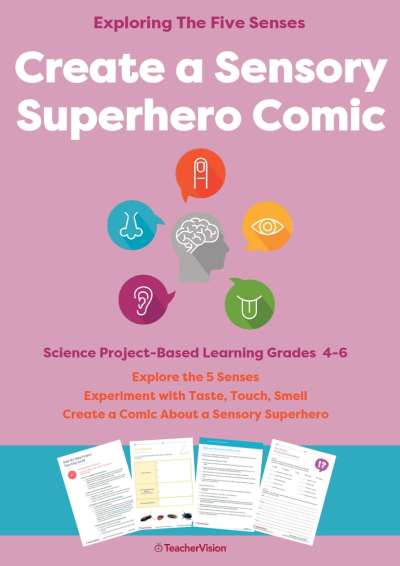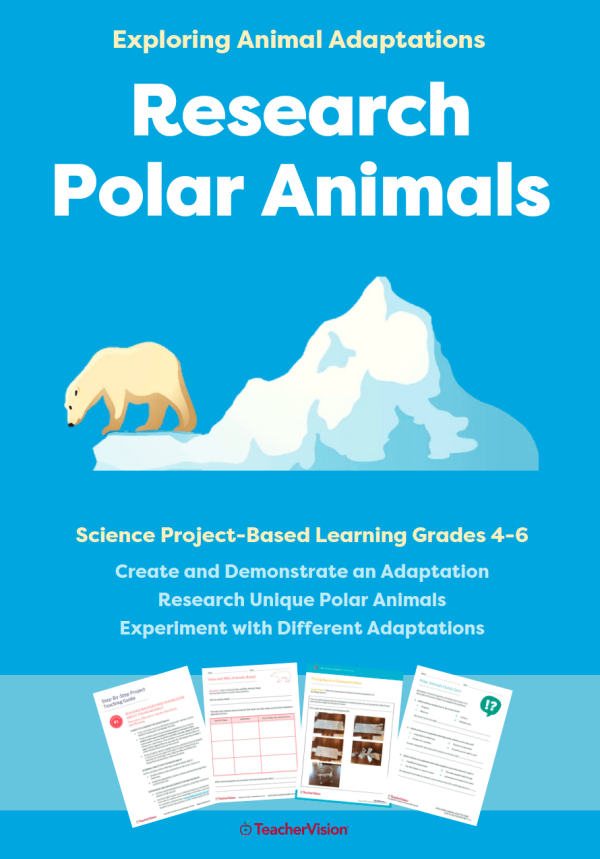
A Comprehensive Lesson on Animal Adaptations
Research and explore the unique adaptations of polar animals, experiment with different types of adaptations, and design, create, and demonstrate an "adaptation" in this science PBL unit.
Your students will learn all about how animals adapt for survival in this complete project-based learning unit on animal adaptations for 4nd to 6th grade science. They'll research adaptations for polar animals in detail, compare and contrast different types of adaptations through in-class experiments, and design and create an "adaptation" that they can demonstrate to the class.
What's Inside
Packed with hands-on inquiry-based activities, extensions and enhancements, cross-curricular independent and group work, and engaging and interactive challenges, this 68-page project-based unit comes complete with:
- For the Teacher: A complete animal adaptations Lesson Plan with step-by-step instructions for all activities, teaching tips, assessment guidance, and inquiry questions.
- For Students: A full-color Student Pack complete with all of the printables and instructions students need for the research, experiments and activities - just print (or share) and teach!
A complete, ready-to-teach Teacher Pack that includes:
- Teacher versions of all the student printables with step-by-step annotations and notes for teaching animal adaptations;
- Formative and summative assessments, answer keys, and a full project rubric;
- Instructions and guidance for the extension activities and project enhancements;
- Materials and resources lists, PowerPoint presentations, plus additional resources for lecture and presentation.
What's Included
Lesson Plan - Step-by-Step Project Guide
- Milestone 1: Building Background Knowledge About Polar Animals
- Milestone 2: Understanding How Animal Adaptations Aid in Survival
- Milestone 3: Demonstrating How Animal Adaptations Work In Nature
- Milestone 4: Plan, Design, and Create an Adaptation Demonstration
- Milestone 5: Demonstrate an Adaptation
Teacher and Student Resources
- List of Books About Polar Animals
- How and Why Animals Adapt Answer Key
- Exploring the Arctic Answer Key
- Arctic and Antarctic Animals
- Map of the Arctic and Antarctica
- Polar Animal Adaptations Answer Key
- Sample Flying Squirrel Slide
- Flying Squirrel Demonstration
- Bird Beak Adaptations Demonstration
- Polar Animals Quick Quiz
- Polar Animals Quick Quiz Answer Key
- Oral Presentation Mini-Lesson
- Polar Animals Summative Assessment
- Polar Animals Summative Assessment Answer Key
- Polar Animals Presentations Rubric
- How and Why Animals Adapt
- Exploring the Arctic
- Polar Animal Adaptations
- Learn About the Arctic and Antarctic
- Polar Powers Project Guidelines
- Polar Powers
- How to Do Good Research
- Milestone #1 Inquiry Question
- Demonstration Ideas
- Milestone #2 Inquiry Question
- Bird Beak Adaptations Demonstration
- Using a Bird Beak
- Materials and Procedure
- Milestone #3 Inquiry Question
- What Do You Do With a Problem?
- Demonstration Observations
- Milestone #4 Inquiry Question
- You Be the Judge
- Milestone #5 Inquiry Question
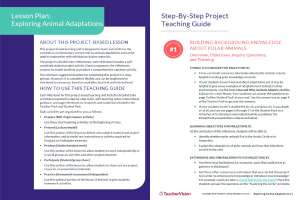
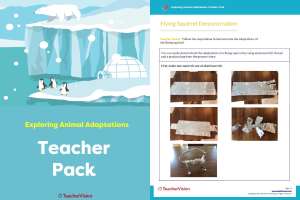
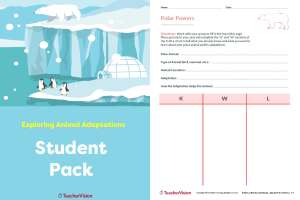
OVERVIEW:
This project-based learning lesson is designed to support and reinforce the concepts taught as part of a lesson on Animal Adaptations. It is built around 5 inquiry-based milestones that incorporate cross-curricular hands-on projects, formative and summative assessments, independent and group activities, and extensions.
STUDENT/GROUP OUTPUT:
In the course of this project-based learning unit, students will:
- Research and document the unique adaptations of polar animals as background knowledge for the rest of the project;
- Build and experiment with a "flying squirrel" to understand how adaptations aid in survival;
- Make and practice with an artificial "bird beak" to demonstrate how an adaptation works in an animal's specific ecosystem;
- Synthesize acquired research and empirical knowledge into the creation and design of an animal "adaptation" that demonstrates functionally how an adaptation aids in survival in a specific ecosystem;
- "Show what they know" by demonstrating their "adaptation" to the class, and offer feedback on presentations given by other students.
SUGGESTED SUBJECT PREREQUISITES:
Students will acquire necessary background knowledge of animal adaptation as part of this project, and instructional materials for providing that background are included in the Teacher Pack.
SEQUENCE AND PACING
This project-based unit is divided into 5 milestones. The minimum suggested duration for completing this project-based unit is 5 class periods. However, the unit is completely flexible can be lengthened or shortened as necessary or desired, based on available class time and interest level.
TECHNOLOGY RESOURCES (suggested):
- Internet access
- Microsoft Office PowerPoint, Google Slides, or other presentation software.
STANDARDS ALIGNMENT
These activities support the following NGSS curriculum standards:
- 4-LS1-1: Construct an argument that plants and animals have internal and external structures that function to support survival, growth, behavior and reproduction
- Use a model to describe that animals receive different types of information through their senses, process information in their brain, and respond to the information in different ways.
